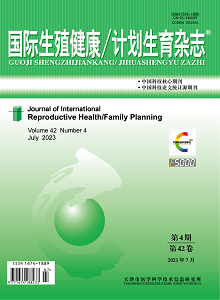Objective: To explore the effect of gestational interval time on postpartum pelvic floor dysfunction (PFD) of multiparas, and to establish a prediction model for PFD of multiparas to guide the clinical screening. Methods: A total of 636 cases of multiparas from October 2021 to October 2022 were retrospectively analyzed. These cases were divided into the PFD group (n=244) and the non-PFD group (n=392) according to whether PFD occurred after delivery. A total of 471 multiparas from January 2021 to September 2021 were selected as the validation set. The predictive power of postpartum PFD was analyzed by receiver operator characteristic (ROC) curve. Univariate and Logistic multivariate analysis were used to analyze the influencing factors of PFD. The PFD risk prediction model was established and the effectiveness of centralized analysis was tested. Results: The incidence of PFD was 38.36% (244/636). The optimal cut-off was 23.5 months. The independent influencing factors of PFD in multiparas were the age ≥35 years (OR=9.262, 95%CI: 2.103-40.749), family history of PFD (OR=6.297, 95%CI: 1.538-25.789), gestational interval ≤23.5 months (OR=78.971, 95%CI: 19.283-323.414), vaginal delivery of the current pregnancy (OR=5.483, 95%CI: 1.420-21.170), and neonatal weight ≥4 kg (OR=4.357, 95%CI: 1.243-15.277). Risk prediction model was F=-18.718+9.262×age (≥35 years=1, <35 years=0)+6.297×family history of PFD (yes=1, no=0)+gestational interval (≤23.5 months=1, >23.5 months=0)+5.483×vaginal delivery of this pregnancy (yes=1, no=0)+4.357×newborn weight (≥4 kg=1, <4 kg=0). The area under the curve (AUC) of ROC of risk model was 0.878 (95%CI: 0.852-0.966), the sensitivity was 0.892, and the specificity was 0.820. Conclusions: Multiparas with gestational interval ≤23.5 months should be alert to the postpartum PFD, and the risk prediction model of PFD is helpful for the PFD screening in multiparas.

